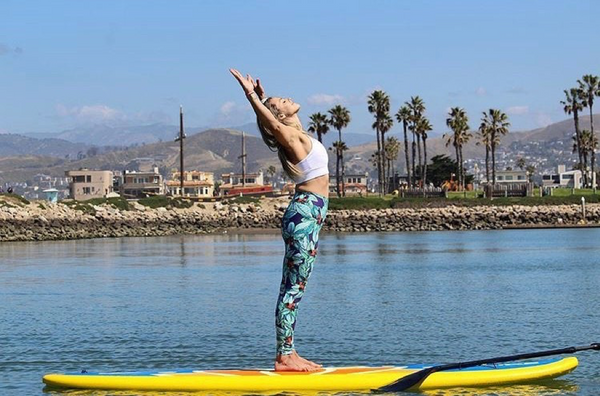
Preventing Paddle Boarding Injuries: Stay Pain-Free on the Water
Avoid shoulder, back, and elbow pain with these proven tips for preventing paddle boarding injuries. Learn how to stay strong, safe, and balanced on every paddle.
Paddle boarding is wonderfully low-impact—but repetitive motion and shaky form can still trigger aches in the shoulders, lower back, and elbows. The good news: a few small changes to your prep, technique, and gear can dramatically reduce your risk of paddle boarding injuries and keep you on the water longer.

Warm-Up: Your First Line of Defense
A 5–8 minute dynamic warm-up wakes up the exact tissues you use on the board.
Try this quick sequence:
• 30 sec each: arm circles (both directions), band pull-aparts or doorway pec stretch, torso rotations
• 30 sec each: hip hinges, walking lunges, ankle rocks
• 20 easy air-strokes with an upright, vertical “paddle” motion to groove mechanics
Foam roll (1–2 minutes total) on lats, upper back, hip flexors, forearms. This boosts blood flow, improves shoulder range, and helps your core brace more effectively.
Shoulder Safety: Build Power, Not Pain
Shoulders account for a big chunk of paddle boarding injuries. Keep them happy with these cues:
• Keep your top-hand elbow below shoulder height.
• Stack joints: top hand above shaft, bottom hand relaxed.
• Rotate from your torso—think “hips and ribs drive the blade,” not arms.
• Size the paddle right: about 8–10 inches taller than you for all-around paddling.
• Consider a smaller blade for long tours to reduce joint load.
If you feel front-of-shoulder pinch, shorten the paddle slightly, reduce reach, and emphasize torso rotation over shoulder lift.
Lower Back Care: Hinge, Don’t Hunch
Lower back fatigue usually means the hips and core aren’t doing their share.
• Hinge at the hips with a neutral spine (imagine a proud chest and long neck).
• Brace the core just before the catch; exhale through the pull.
• Keep the blade close to the rail to minimize twisting.
• If your back lights up quickly, widen your stance a touch or use a more stable board.
Off-water “prehab” (2–3x/week):
• Dead bug x 8/side, Side plank x 20–30s/side, Glute bridge x 12–15
• Hip hinge patterning with a dowel (tailbone + mid back + head contact)
Elbow & Wrist Health: Tame the Grip
Overgripping and overreaching can spark forearm tendon pain.
• Use a light, “thumb-and-two-fingers” test grip when cruising.
• Keep wrists neutral—avoid cocked-back positions at the catch.
• Shorten the reach slightly; let rotation create length, not elbow extension.
• Consider a bent-shaft paddle for better wrist alignment.
If symptoms flare, take 48 hours off paddling, ice 10–15 minutes 1–2x/day, and add gentle wrist flexor/extensor stretches.
Equipment Matters (More Than You Think)
Right gear spreads load across big movers (glutes, core, lats) instead of fragile joints.
• Paddle length: 8–10" over height (touring). Shorter for surf; tweak to comfort.
• Blade size: smaller for endurance/shoulder-friendly cadence; bigger for short, powerful efforts.
• Board stability: wider = easier balance = less compensating tension.
• Leash + PFD: always—safe falls reduce freaky, injury-causing recoveries.

Technique Tweaks That Pay Off
• Vertical shaft at the catch, blade fully buried—no half-strokes.
• Power ends at the feet; exit near your heels to avoid overpulling behind you.
• Smooth cadence beats “yank and rest.” Think even rhythm and quiet water.
Off-Water Strength That Protects You
Two short sessions a week will armor your joints:
• Upper body: band rows, single-arm cable rows, face pulls, landmine presses
• Core: Pallof press, suitcase carries, stir-the-pot (on a ball)
• Legs/hips: split squats, step-downs, RDLs (light-moderate), lateral lunges
Keep reps in the 8–12 range, 2–3 sets, crisp form, no grind.
Recovery: Where Gains Actually Happen
• Cool down: 3–5 minutes easy paddling, then gentle stretches (lats, hip flexors, hamstrings, pecs).
• Rehydrate + protein within 60 minutes (20–30g protein).
• Sleep 7–9 hours—tissues remodel when you do.
• Red flags: sharp pain, night pain, tingling, or pain >48 hours—see a qualified clinician.
Listen To Your Body (It’s Talking)
Discomfort that improves as you warm up is often simple stiffness. Pain that worsens as you paddle or lingers afterward needs a change: shorten the session, reduce blade size, or tweak paddle length and technique.
Year-Round Strength and Mobility for SUP Longevity
Staying injury-free isn’t just about what you do before and during your paddles — it’s also about how you train between sessions. Consistent off-season or cross-training builds strength in your core, shoulders, and legs, helping stabilize your body when you’re on the board.
Focus on:
-
Core Stability: Planks, Pallof presses, and bird dogs improve rotational control and reduce strain on the spine.
-
Shoulder Mobility: Resistance-band external rotations and wall slides keep joints healthy for repetitive paddling.
-
Leg Power and Balance: Step-ups, lateral lunges, and single-leg Romanian deadlifts develop the lower body strength needed for stability and endurance.
Try two 30-minute sessions per week, keeping movements slow and controlled. Pair this with regular stretching or yoga for flexibility — especially in the hips and hamstrings — and you’ll dramatically reduce your risk of overuse injuries on the water.

Final Thoughts
Longevity in SUP isn’t luck—it’s the compound interest of good habits. Warm up, hinge well, rotate from your torso, ease your grip, and choose gear that fits your body and goals. Do these consistently and you’ll spend more days gliding pain-free—and fewer days nursing avoidable paddle boarding injuries.

